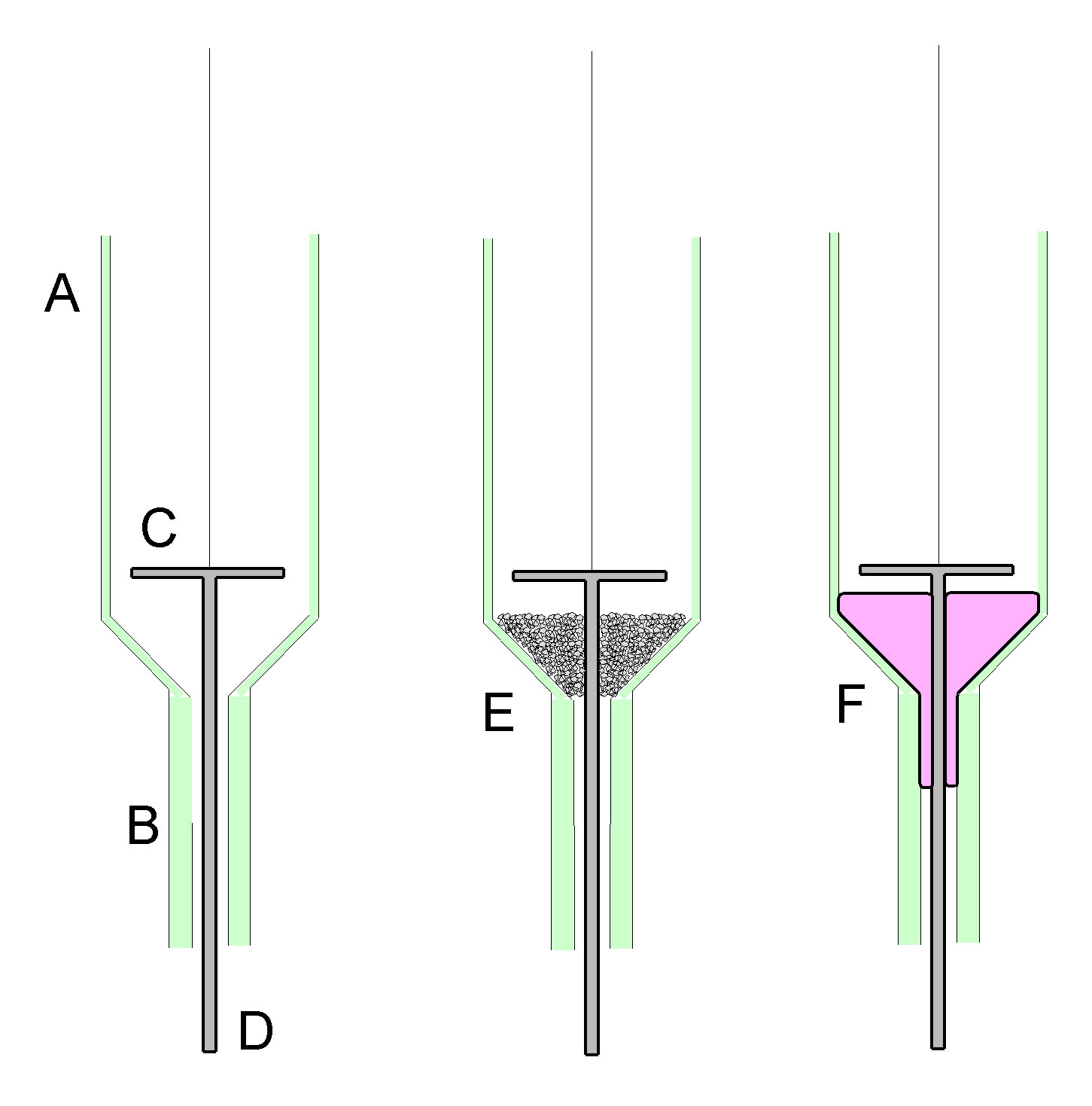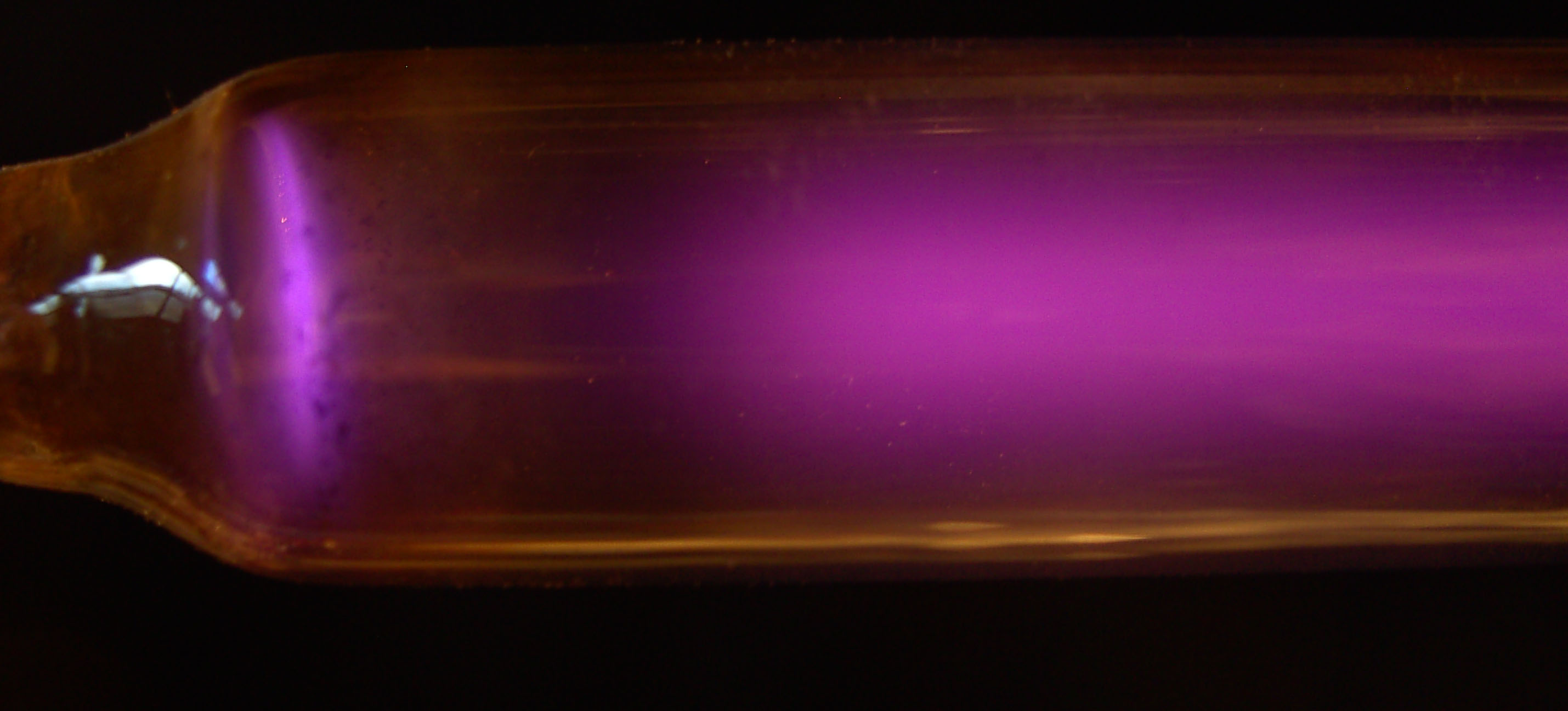
ALL MATERIAL COPYRIGHT KEVIN SCOTT 2011. LINKS TO THIS SITE ARE WELCOME BUT DO NOT COPY MATERIAL FROM THIS SITE TO ANY OTHER WEBPAGE.
If you find this site useful, please support it by making a donation of $1 to help maintain and develop it. Click on the PAYPAL DONATE button to do this safely. But there is no obligation - please avail yourself of the information and facilities of the site at no charge.

The construction of a seal using horn silver is relatively simple. The diagram shows a lead through for an electrical connection
into a vacuum system. An electrode C is brazed to a wire D. D must be a silver or platinum wire for silver chloride reacts with stainless steel,
iron and other metals. A short section of borosilicate capillary B is sealed to the tube A. The region of the joint is packed with powdered
Silver Chloride or Silver Chloride/Lead Chloride Eutectic mixture. the lower end of capillary B can be sealed with a little ceramic cement to
prevent the horn silver escaping when melted.
The whole assembly is placed in an oven and heated to 500 deg C in the
case of pure Silver Chloride, or 350 deg C in the case of the eutectic mixture. This temperature is maintained for several hours and then the
oven slowly cooled over a 10 hour period. Rapid cooling can result in slight leaks in the horn silver joint.
The joints were tested by constructing a small discharge tube using them. The diagram shows the tube and the discharge obtained with a small
induction coil connected across it with air at 1mm Hg internal pressure.


The main features of the discharge are: R the cathode glow, S, the Crookes Dark Space, T, the Negative Glow, U the Faraday Dark Space, and V the Positive
Column. Of these, the Crookes Dark Space is most difficult to observe but can be just discerned in the photograph below.
